5.6 Neurons and Synapses
5.0(2)
5.0(2)
Card Sorting
1/17
Earn XP
Description and Tags
From MaritNy on Quizlet
Study Analytics
Name | Mastery | Learn | Test | Matching | Spaced |
|---|
No study sessions yet.
18 Terms
1
New cards
What are the three basic components of all neurones?
1) Dendrites
2) Axon
3) Soma
2) Axon
3) Soma
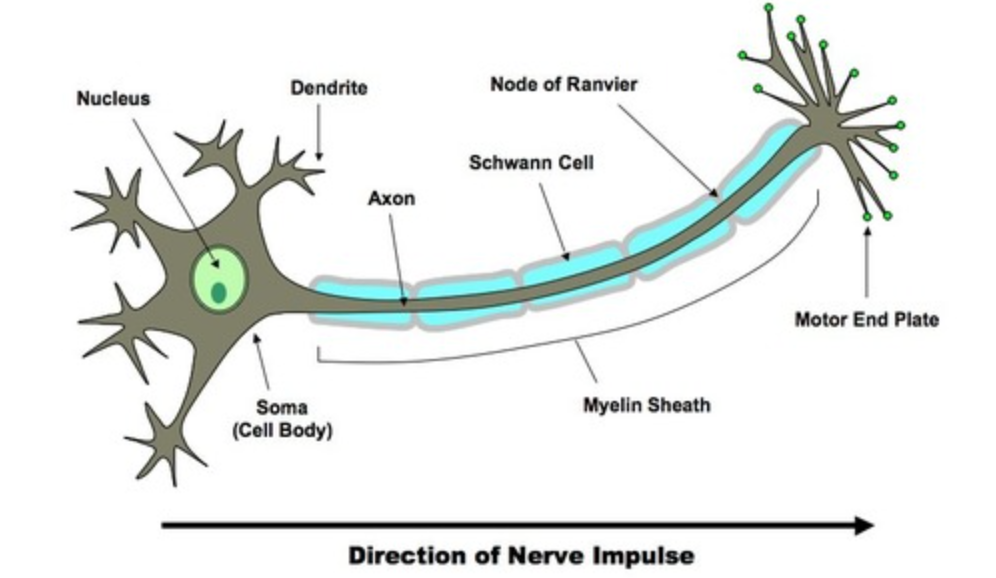
2
New cards
What is the advantage and disadvantage of having a myelin sheath?
1) Faster electrical conduction
2) More space and energy required
2) More space and energy required
3
New cards
What is the soma?
cell body of a neuron, contains the *nucleus, organelles and essential metabolism*
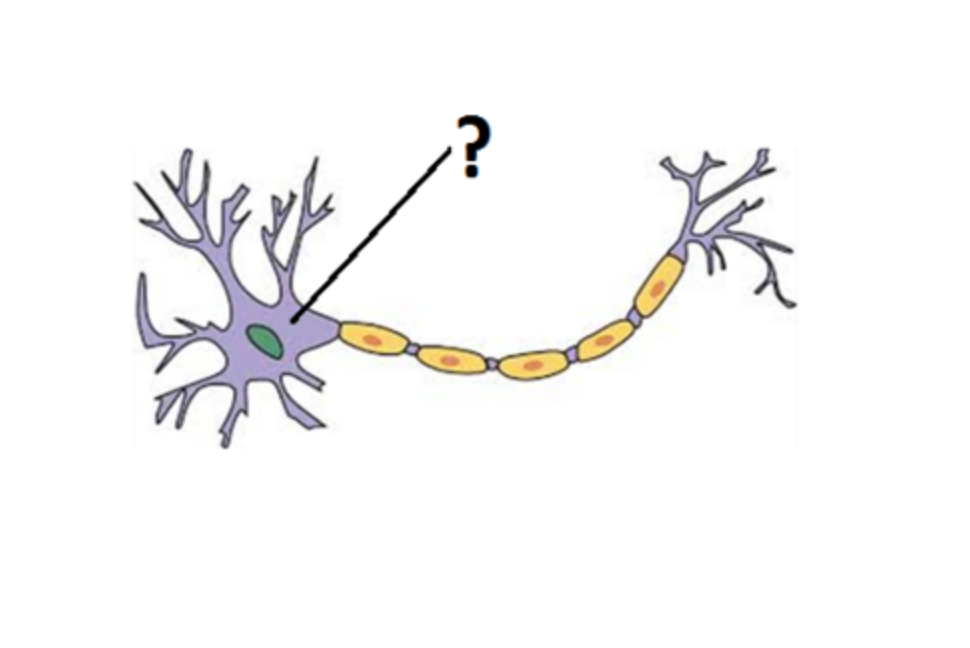
4
New cards
Where does the axon propogate signals to and from?
Conducts impulses AWAY from the cell body (soma) to other neurones or effectors
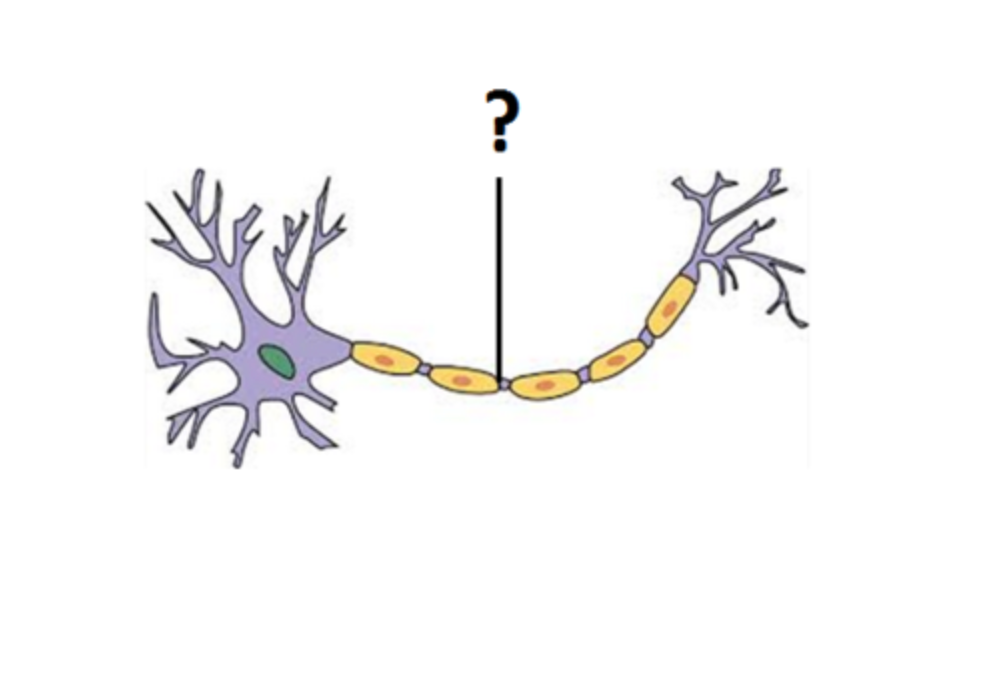
5
New cards
What are dendrites?
Protoplasmic extensions that receive signals from other neurons, conducts impulses TOWARD the soma - NOT axon terminal (other )
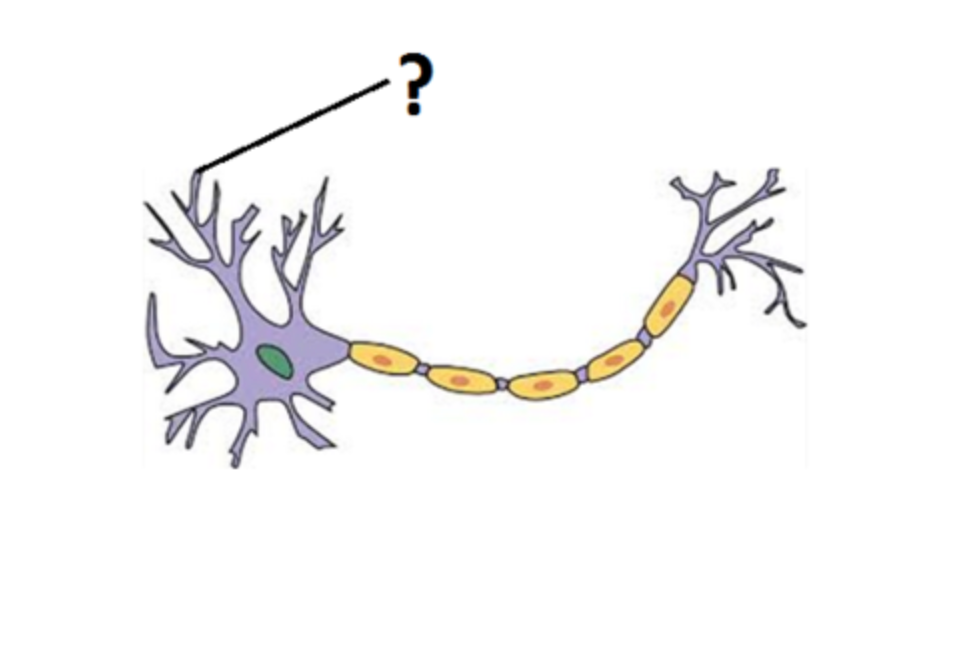
6
New cards
What is the typical mammalian resting potential (charge difference when not excited) and which side of the cell is more negative?
-70 milliVolts (inside is *more negative* than outside of cell)

7
New cards
Outline how the Sodium-Potassium pump, alongside two other components, maintain resting potential (3)
1) Three Na+ are actively expelled and two K+ are taken in, using ATP (making inside more negative)
2) Some K+ passively flows down Potassium *leak channel*, leaving the cell
3) *Fixed anions* within the cell help maintain more negative charge inside cell, too
2) Some K+ passively flows down Potassium *leak channel*, leaving the cell
3) *Fixed anions* within the cell help maintain more negative charge inside cell, too
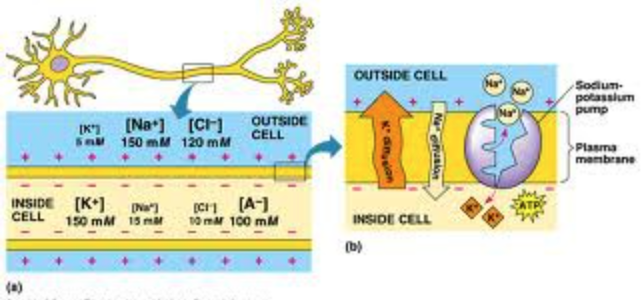
8
New cards
What are the three names given to the stages of an action potential (firing/excitation)?
Depolarisation
Repolarisation
Refractory Period
Repolarisation
Refractory Period
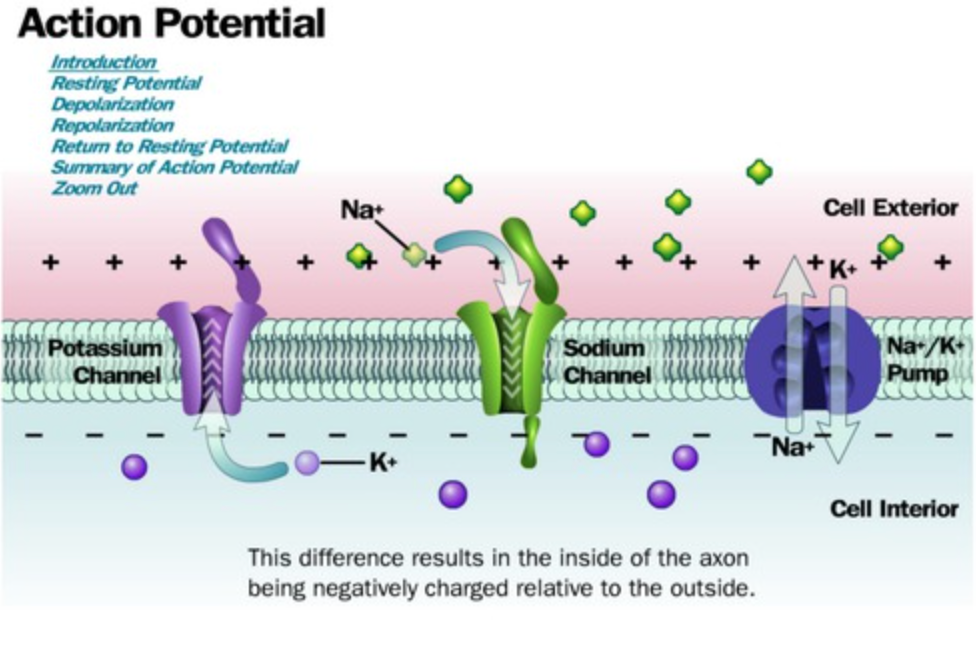
9
New cards
Outline depolarisation
Sudden change from a relatively negative to positive membrane potential/inside of cell:
1) Mechnical Na+ channels are opened within axon membrane due to *stimulus* --\> if enough Na+ then a ton more voltage Na+ channels open (threshold voltage)
2) Na+ passively diffuses back down its concentration gradient, into the cell
3) Membrane potential becomes *more positive* to +30mV
1) Mechnical Na+ channels are opened within axon membrane due to *stimulus* --\> if enough Na+ then a ton more voltage Na+ channels open (threshold voltage)
2) Na+ passively diffuses back down its concentration gradient, into the cell
3) Membrane potential becomes *more positive* to +30mV
10
New cards
Outline repolarisation
Restoring a negative membrane potential (relative inner cell charge):
1) K+ channels open due to the large Na+ influx
2) K+ flows down its concentration gradient, *out of the cell* restoring negative membrane potential to about 80mV
1) K+ channels open due to the large Na+ influx
2) K+ flows down its concentration gradient, *out of the cell* restoring negative membrane potential to about 80mV
11
New cards
What is the refractory period?
Absolute: depolarization + repolarization (Na+ channel must return to resting state)
RELATIVE: After repolarisation, we have a -80mV membrane potential and the K+ is outside and Na+ is now inside. Although another action potential CAN occur, even more Na+ needed to reach threshold voltage!)
The period where the *Sodium Potassium pump* reverses this and restores the potential to 70mV is called the refractory period [sometimes called hyperpolarisation]
RELATIVE: After repolarisation, we have a -80mV membrane potential and the K+ is outside and Na+ is now inside. Although another action potential CAN occur, even more Na+ needed to reach threshold voltage!)
The period where the *Sodium Potassium pump* reverses this and restores the potential to 70mV is called the refractory period [sometimes called hyperpolarisation]
![Absolute: depolarization + repolarization (Na+ channel must return to resting state)
RELATIVE: After repolarisation, we have a -80mV membrane potential and the K+ is outside and Na+ is now inside. Although another action potential CAN occur, even more Na+ needed to reach threshold voltage!)
The period where the *Sodium Potassium pump* reverses this and restores the potential to 70mV is called the refractory period [sometimes called hyperpolarisation]](https://knowt-user-attachments.s3.amazonaws.com/83d136dfafc042f8915f8bf3ed2a9cff.jpeg)
12
New cards
Why is action potential propogation through a neuron regarded as a wave of depolarisation?
1) Ion channels in axon are *voltage-gated* (e.g. Na+)
2) Depolarisation of one axon segment triggers next segment's ion channels to open due to generation of *local currents*
i.e. If ion channels open in one section of the axon, this is enough to trigger the activation of ion channels in the next section
2) Depolarisation of one axon segment triggers next segment's ion channels to open due to generation of *local currents*
i.e. If ion channels open in one section of the axon, this is enough to trigger the activation of ion channels in the next section
13
New cards
What is the treshold potential?
*-55mV* is needed for LOADS OF voltage-gated ion channels to open and an action potential to *initiate* (all-or-nothing principle) - if Na+ channels are exposed to this, they will ALL open causing a massive influx during depolarisation
14
New cards
Outline the different parts of the oscilloscope trace of an action potential (ms agianst mV)
1) Resting potential (70mV)
2) Rising limb represents depolarisation: split into *two parts* as influx of Na+ increases rapidly past treshold voltage
3) Falling limb represents repolarisation to 80mV caused by K+ efflux
4) Refractory period is restoration back to baseline 70mV by Sodium-Potassium pump
2) Rising limb represents depolarisation: split into *two parts* as influx of Na+ increases rapidly past treshold voltage
3) Falling limb represents repolarisation to 80mV caused by K+ efflux
4) Refractory period is restoration back to baseline 70mV by Sodium-Potassium pump
15
New cards
What produces myelin (proteins and phospholipids)?
Oligodendrocytes (CNS) and Schwann cells (PNS)
16
New cards
What is saltatory conduction?
In *myelinated* neurones, action potential *jumps* between gaps in the myelin sheath called *nodes of Ranvier*
17
New cards
Using knowledge of saltatory conduction, explain why unmyelinated neurones are so slow
Action potentials must propogate sequentially along *ALL* sections of an axon instead of being conducted between nodes of Ranvier by myelin
18
New cards
What makes up the autonomic nervous system?
Sympathetic and parasympathetic